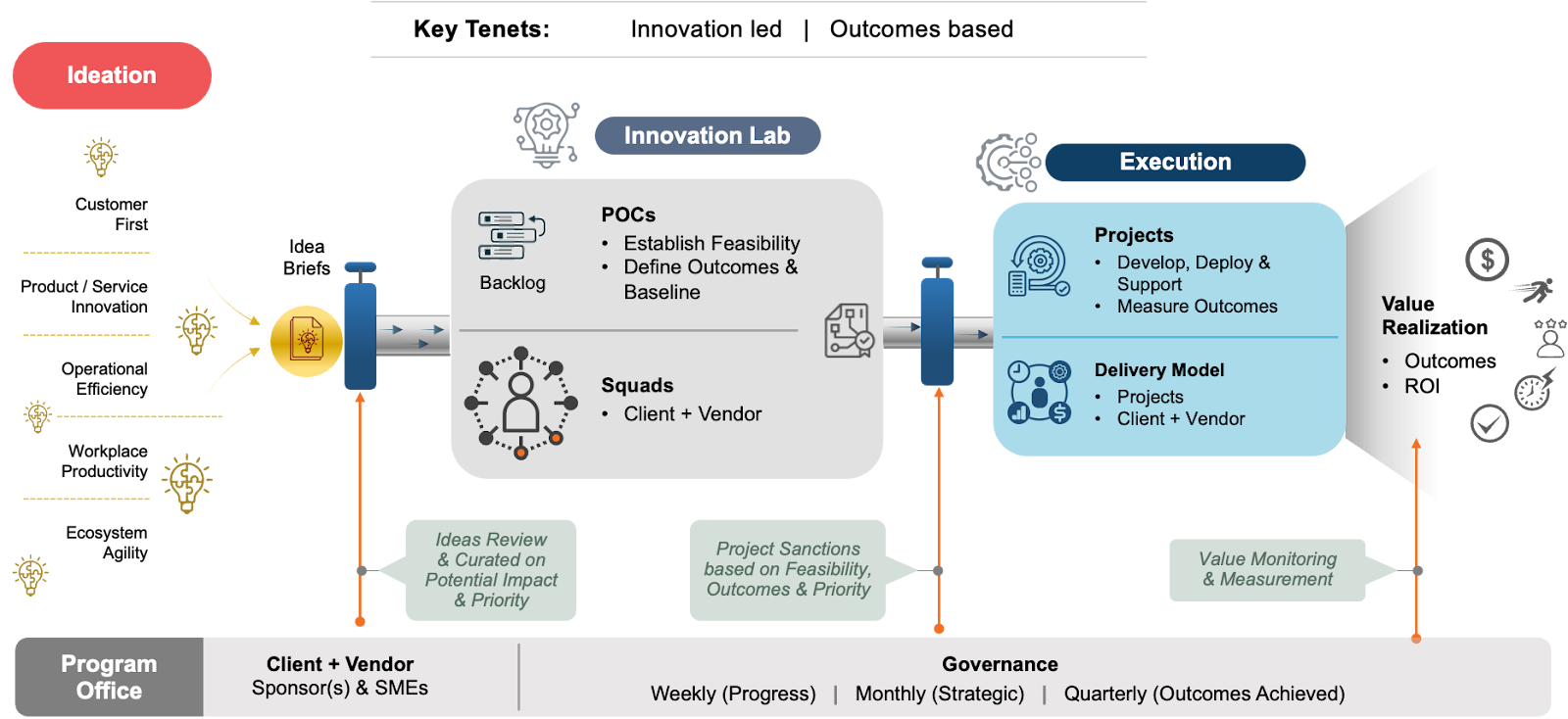Brand Stories
Trump is undermining his own ‘action plan’ for AI, experts say

WASHINGTON — President Trump revealed an “action plan” for artificial intelligence on Wednesday ostensibly designed to bolster the United States in its race against China for AI superiority.
But experts in the field warn the administration is sidestepping safety precautions that sustain public trust, and is ignoring the impacts of research funding cuts and visa restrictions for scientists that could hold America back.
‘Dangerous incentives to cut corners’
President Trump at a meeting Tuesday in the Oval Office.
(Chip Somodevilla / Getty Images)
Trump introduced the new policy with an address in Washington, a new government website and a slew of executive actions, easing restrictions on the export of AI technology overseas and greasing the wheels for infrastructural expansion that would accommodate the computing power required for an AI future — both top requests of American AI companies.
The plan also calls for AI to be integrated more thoroughly across the federal government, including at the Pentagon, and includes a directive targeting “woke” bias in large language models.
The new website, ai.gov, says the United States “is in a race to achieve global dominance in artificial intelligence,” and lays out three pillars of its plan for success: “Accelerating Innovation, Building AI Infrastructure, and Leading International Diplomacy and Security.”
Scholars of machine learning and AI believe that whichever country loses the race — toward general artificial intelligence, where AI has capabilities similar to the human mind, and ultimately toward superintelligence, where its abilities exceed human thought — will be unable to catch up with the exponential growth of the winner.
Today, China and the United States are the only powers with competitive AI capabilities.
“Whether we like it or not, we’re suddenly engaged in a fast-paced competition to build and define this groundbreaking technology that will determine so much about the future of civilization itself, because of the genius and creativity of Silicon Valley — and it is incredible, incredible genius, without question, the most brilliant place on Earth,” Trump said on Wednesday in his policy speech on AI.
“America is the country that started the AI race. And as president of the United States, I’m here today to declare that America is going to win it,” he added. “We’re going to work hard — we’re going to win it. Because we will not allow any foreign nation to beat us. Our children will not live in a planet controlled by the algorithms of the adversary’s advancing values.”
Yoshua Bengio, founder of Mila-Quebec AI Institute and a winner of the Turing Award for his work on deep learning, told The Times that the urgency of the race is fueling concerning behavior from both sides.
“These technologies hold enormous economic potential,” Bengio said, “but intense competition between countries or companies can create dangerous incentives to cut corners on safety in order to stay ahead.”
‘Self-inflicted ignorance’
Silicon Valley may be getting much of what it wants from Trump — but the administration’s continued assault on the student visa program remains a significant concern for the very same tech firms Trump aims to empower.
Yolanda Gil, senior director of AI and data science initiatives at the USC Viterbi School of Engineering, said that the Trump administration’s reductions in funding and visas “will reduce U.S. competitiveness in AI and all technology areas, not just in the near future but for many years to come,” noting that almost 500,000 international students in science and engineering are currently enrolled in U.S. universities.
The majority of America’s top AI companies have been founded by first- or second-generation immigrants, and 70% of full-time graduate students at U.S. institutions working in AI-related fields have come from abroad. Yet the administration’s revocation and crackdown on F-1 visas risks crippling the talent pipeline the industry views as essential to success against China.
Funding cuts to research institutions, too, threaten the stability of programs and their attractiveness to the best foreign minds, said Sheila Jasanoff, a professor of science and technology studies at the Harvard Kennedy School.
“Our openness to ideas and people, combined with steadiness of funding, drew bright talents from around the globe and science prospered,” Jasanoff said. “That achievement is in a precarious state through the Trump administration’s unpredictable and exclusionary policies that have created an atmosphere in which young scientists are much less comfortable coming to do their science in America.”
“Why would a talented young person wish to invest in a U.S. graduate program if there is a risk their visa could be canceled overnight on poorly articulated and unprecedented grounds? It’s clear that other countries, including China, are already trying to benefit from our suddenly uncertain and chaotic research environment,” she added. “We seem to be heading into an era of self-inflicted ignorance.”
Teddy Svoronos, also at Harvard as a senior lecturer in public policy, said that the president is deregulating the AI industry “while limiting its ability to recruit the highest-quality talent from around the world and de-incentivizing research that lacks immediate commercial use.”
“His policies thus far convince me that the future of the U.S. will certainly have more AI,” Svoronos said, “but I don’t see a coherent strategy around creating more effective or more aligned AI.”
Safety fears
Aligned AI, in simple terms, refers to artificial intelligence that is trained to do good and avoid harm. Trump’s action plan doesn’t include the phrase, but repeatedly emphasizes the need to align AI development with U.S. interests.
The deregulatory spirit of Trump’s plan could help expedite AI development. But it could also backfire in unexpected ways, Jasanoff said.
“It’s not clear that technology development prospers without guardrails that protect scientists and engineers against accidents, overreach and public backlash,” she added. “The U.S. biotech industry, for example, has actively sought out ethical and policy clarification because missteps could endanger entire lines of research.”
The plan also has the United States encouraging the development of open-source and open-weight AI models, allowing public access to code and training data. It is a decision that will allow AI to be more readily adopted throughout the U.S. economy — but also grants malicious actors, such as terrorist organizations, access to AI tools they could use to threaten national security and global peace.
It is the sort of compromise that Bengio feared would emerge from the U.S.-China race.
“This dynamic poses serious public safety and national security risks, including AI-enabled cyberattacks, biological threats and the possibility of losing human control over advanced AI — outcomes with no winners,” Bengio said.
“To realize the full benefits of these technologies,” he added, “safety and innovation must go hand in hand, supported by strong technical and societal safeguards.”
What else you should be reading
The must-read: National Guard came to L.A. to fight unrest. Troops ended up fighting boredom
The deep dive: Hollywood’s being reshaped by generative AI. What does that mean for screenwriters?
The L.A. Times Special: As west Altadena burned, L.A. County fire trucks stayed elsewhere
More to come,
Michael Wilner
—
Was this newsletter forwarded to you? Sign up here to get it in your inbox.
Brand Stories
CheQin.ai sets a new standard for hotel booking with its AI capabilities: empowering travellers to bargain, choose the best, and book with clarity.

The global hotel booking experience has long been defined by routine: scroll endlessly, compare rates, hope for transparency, and settle for what’s available. For many, the process feels more transactional than empowering. But a shift is emerging in the hospitality sector, one that aims to put genuine control and clarity back in the hands of both guests and hoteliers. At the forefront is CheQin.ai, a platform fundamentally rethinking the way hotels and travelers connect.
From Passive Searching to Active Requesting
Unlike conventional platforms that require users to sift through dozens of listings, CheQin.ai introduces a model where guests articulate their exact requirements, room preferences, amenities, stay dates and invite hotels to respond with tailored offers in real time. This guest-driven approach replaces guesswork with choice and ensures travelers receive the most relevant options without the fatigue of endless scrolling. For groups, families, or those with specific needs, the process is refreshingly direct.
Transparent Pricing – No Surprises, No Hidden Fees
For travelers, hidden fees and opaque terms remain persistent frustrations. CheQin.ai addresses these head-on, insisting that all offers are all-inclusive: the price a guest sees is the price they pay. The platform’s zero-commission model enables hotels to pay no listing or booking fees and fosters a healthier marketplace, encouraging hoteliers to compete on genuine value, not marketing budget or hidden margins.
A Level Playing Field for Competitive Bargaining
CheQin.ai reframes hotel booking as a win-win exchange. Once a request is posted, hotels can view competitor offers and adjust their pricing in real time. This transparent competition creates an environment where guests receive up to five of the lowest, direct offers, each one clear, competitive and tailored to their needs. For hoteliers, it’s an opportunity to fill rooms and engage directly with guests, minus the overhead of traditional commission structures.
Technology That Enables Human Choice
At its core, CheQin.ai employs technology not as a substitute for service, but as an enabler of better decision-making. Instant notifications, direct hotel-guest communication, and streamlined booking processes ensure that the platform remains efficient and intuitive. Features such as bulk bookings, flexible stay durations and day-use options reflect a nuanced understanding of modern traveler requirements.
Reflecting Broader Industry Trends
The emergence of platforms like CheQin.ai is emblematic of a wider movement within hospitality: a demand for flexibility, fairness and transparency. The traditional, one-size-fits-all approach is giving way to systems where user agency is prioritized and where competition among providers ultimately benefits the end user.
Clarity and Control for All
For the modern traveler and hotelier alike, CheQin.ai sets a compelling new benchmark. Guests are empowered to bargain and select from transparent, real-time offers; hoteliers engage with motivated travelers in a commission-free environment. The result is a marketplace where both sides participate on equal terms and where clarity so often missing in hotel bookings becomes standard.
Disclosure: The author has no financial interest in CheQin.ai or any companies mentioned in this article. This article is based on independent analysis and observations of current trends in the hospitality industry.
Brand Stories
Navigating Challenges and Driving Success, ETCIO

The 2021 collapse of ‘Zillow Offers’ serves as a stark reminder of what can go wrong when AI is deployed without the right safeguards. Built to automate home buying, Zillow’s algorithms frequently misjudged market conditions – causing the company to overpay for thousands of homes. With unsold inventory piling up, Zillow took nearly a billion dollars in losses, laid off 2,000 employees, and eventually shut down the program.
While this played out in the consumer space, similar risks are surfacing inside enterprise AI pilots across banking, pharma, and manufacturing where agentic models are being rushed into production without the governance. However, real-world adoption of Agentic AI presents a complex landscape. What looks promising in a lab can fall apart in production. The gap between PoC and scalable success remains wider than most leaders realize.
The AI adoption journey
According to Gartner’s 2024 survey, a striking 80% of Generative AI proof of concepts (PoCs) fail to make it to full-scale production. Most enterprises begin their AI journey by collaborating with existing technology vendors and engaging strategy consulting firms to craft a tailored AI roadmap. This typically leads to the identification of a few proof-of-concept (PoC) initiatives aimed at testing AI’s viability within specific business processes.
However, the initial excitement often gives way to sobering realities. One of the first hurdles is accuracy and efficacy. Off-the-shelf AI solutions, regardless of the underlying large language models (LLMs), frequently deliver only 75-80% accuracy when deployed. For AI to be truly useful in business-critical scenarios, enterprises must aim for 95% or higher accuracy. Achieving this requires addressing both data quality and algorithmic sophistication – a dual challenge that many organizations underestimate.
The data dilemma
A major barrier to effective AI implementation is the nature of enterprise data. Historically, data has been curated for human consumption – structured to support manual analysis and decision-making. AI, on the other hand, thrives on digitally accessible, high-quality data that can fuel autonomous decision-making. This mismatch creates what is known as the “Data for AI” problem. Enterprises must invest in digitalizing their processes, segmenting truly digital data, and building robust data pipelines. Ensuring data quality, traceability, and lineage is essential for developing trustworthy AI systems. Depending on an organization’s data maturity, this transformation can be both time-consuming and costly.Governance and responsibility
Another critical challenge is establishing a governance framework for autonomous AI agents. While “agentifying” business processes can empower human workers and enhance productivity, it must be done responsibly. Without proper oversight, AI decisions can lead to unintended consequences. This is where Responsible AI comes into play. Enterprises must implement guardrails that ensure AI decisions are observable, auditable, and aligned with ethical standards. Continuous monitoring by human decision-makers is essential to maintain control and accountability.
A real-world success story: AskChemille
A standout example of Agentic AI in action is AskChemille, developed by a leading chemical manufacturer to transform how prospects engage with complex polymer solutions. In just six months and with less than half of a full-time equivalent’s cost, the company deployed an AI-powered search-and-answer experience designed to achieve two primary goals: reduce a traditionally 12-month sales cycle that relied heavily on experienced chemistry SMEs, and promote a self-service portal for prospects seeking tailored, expert-level guidance.
Powered by a Small Language Model (SLM) trained to match the expertise of a PhD chemist, AskChemille can accurately answer technical questions and recommend customized solutions, delivering a 75% improvement in sales cycle time and achieving a full ROI within the first quarter of deployment. This showcases how Agentic AI can leapfrog traditional knowledge transfer processes and deliver immediate, high-impact business value by autonomously adapting to user needs and driving outcomes.
The ART of AI success
To navigate these challenges, enterprises should adopt the ART framework focusing on Accuracy, Responsible, and Trustworthiness for AI. These three pillars form the foundation of successful AI implementation. Ignoring any of them introduces significant risk and undermines the potential benefits of AI. To accelerate AI adoption and maximize its impact, organizations should consider the following strategic actions:
- Educate Leadership on AI’s True Potential
- Move beyond the hype around LLMs and chatbots.
- Emphasize AI’s role in scaling human capabilities and enhancing decision-making.
- Integrate machines as trusted collaborators in driving informed decisions
- Invest in Data Maturity
- Digitalize core processes and identify gaps in data readiness.
- Build infrastructure that supports high-quality, AI-ready data.
- Define AI Vision Through Business Outcomes
- Align AI initiatives with key growth, profitability, and operational metrics.
- Ensure AI efforts are outcome-driven, not technology-driven.
- Focus on interoperability and orchestration of agents.
- Articulate ART Goals
- Customize agentic experiences based on business needs.
- Define trust goals, talent requirements, and observability standards.
- Involve business leaders in AI governance through councils and cross-functional teams.
3 Steps to Productionizing AI
To move from PoC to production, enterprises should build on the ART framework and follow three essential steps:
Step 1: Pilot with purpose: Anchor your use case to a clearly defined business outcome.
Step 2: Pick the right tech stack: Choose a platform that supports agent interoperability and future scalability.
Step 3: Co-create for value: Partner with a service provider who can share ownership of value realization. (See sample process below.)
Agentic AI holds immense promises for enterprises, but its adoption requires a thoughtful, strategic approach. By focusing on accuracy, responsibility, and trustworthiness, organizations can unlock AI’s full potential while mitigating risks. The journey may be complex, but with the right vision and investments, enterprises can build intelligent systems that truly empower their workforce and drive sustainable growth.
The author is Uday Hegde, Co-founder & CEO, USEReady
Disclaimer: The views expressed are solely of the author and ETCIO does not necessarily subscribe to it. ETCIO shall not be responsible for any damage caused to any person/organization directly or indirectly.
Brand Stories
10 Common Travel Mistakes in India—And How Smart Travelers Avoid Them
India is a country that bewilders and bewitches in equal measure.

A land of layered history, spiritual energy, chaotic beauty, and heart-shaking hospitality.
But it’s also a country that demands presence, flexibility, and preparation—especially from travelers who think they can wing it.
Whether you’re an international visitor heading to the Taj Mahal or a domestic explorer off to the northeast, India rewards the mindful and humbles the overconfident.
At travelstoriz.com, we’ve walked the crowded bazaars, navigated late trains, and made plenty of mistakes—so you don’t have to.
Here are 10 of the most common travel mistakes in India—and how to travel smarter.
1. Underestimating Time and Distances
The mistake:
Google Maps says 3 hours. You plan for 3 hours. You end up stuck in traffic, delayed by fog, or sidetracked by a chai break with a stranger. In India, 3 hours often means 5.
The fix:
Always buffer extra time into your itinerary. When planning intercity travel, assume +20% variance minimum, especially in monsoon or festival seasons.
Example:
A 250 km drive from Jaipur to Jodhpur may look like a half-day journey. In reality? 6–7 hours with rural traffic.
2. Booking Last-Minute Trains or Buses
The mistake:
Assuming you can get a ticket the day before. IRCTC trains are in high demand—especially for AC classes and Tatkal tickets.
The fix:
Plan your intercity travel at least 15–30 days in advance, especially during holidays like Diwali or school vacations. Use apps like IRCTC Rail Connect or ConfirmTkt to track availability and set alerts.
3. Ignoring the Power of Offline Access
The mistake:
Relying solely on data. But suddenly—no signal.
In rural India, internet coverage drops in and out like power during a thunderstorm.
The fix:
Download offline Google Maps, carry printed copies of tickets, and keep hotel addresses saved in your phone Notes app.
Bonus:
Carry a power bank—it’s not optional, it’s essential.
4. Not Checking Festival or Strike Schedules
The mistake:
You arrive to find everything shut—because it’s a local strike (bandh) or a 5-day temple festival you didn’t know about.
The fix:
Check the local calendar before traveling—especially in Kerala, West Bengal, and Tamil Nadu, where festivals dominate public life.
Smart move:
Ask hotel staff or locals about upcoming closures—they know better than Google.
5. Packing Like You’re Going Abroad
The mistake:
Overpacking formal clothes, too many shoes, or giant suitcases that don’t fit in tuk-tuks or train compartments.
The fix:
Pack light, layerable clothing, and always carry a scarf or shawl—for temple visits, sun protection, or chilly train rides.
Footwear? One walking pair + one slip-on (for temples).
6. Not Using Local Transport Smartly
The mistake:
Assuming Uber works everywhere—or worse, hopping into taxis without negotiation.
The fix:
In metros, use metro cards (Delhi, Mumbai, Bangalore). In smaller towns, auto-rickshaws and bike taxis (Rapido) are lifesavers.
Pro tip:
In places like Goa or Manali, rent a scooter with a helmet—it saves time and gives you local freedom.
7. Eating Carelessly in the Name of “Authenticity”
The mistake:
Jumping into spicy street food without preparing your gut—or worse, drinking tap water.
The fix:
Eat at busy, well-rated local joints. Carry ORS packets, and always drink bottled water (check the seal).
Smart tip:
Start your trip with simple vegetarian meals. Let your stomach adjust.
8. Assuming Everyone Speaks English
The mistake:
Expecting your cab driver in Bihar or tea shop owner in the hills of Coorg to understand your English.
The fix:
Learn a few Hindi phrases or download a translation app.
Better yet, use gestures and smiles—they go a long way.
9. Forgetting the Power of Cash
The mistake:
India is going digital fast, but not all towns are UPI-ready.
Many guesthouses, vendors, and autos still prefer cash—especially under ₹100.
The fix:
Carry ₹2000–₹3000 in small notes (₹10, ₹20, ₹50, ₹100). Avoid ₹2000 bills—they’re often refused.
10. Rushing the Itinerary
The mistake:
Trying to cover Delhi–Agra–Jaipur–Varanasi–Rishikesh in 5 days.
You’ll spend more time in transit than in temples.
The fix:
India is dense with experience.
Pick fewer places. Spend more time. Allow for spontaneity. That’s where the magic is.
In India, Imperfection Is the Experience
India isn’t designed to be convenient. It’s designed to be immersive—a full-body, full-soul experience. You’ll make mistakes. You’ll get delayed. You’ll get surprised. But if you stay open, humble, and prepared—you’ll come home with stories, not just photos. So pack your curiosity. Book your train early. Keep your plans loose and your heart ready.
Tip of the Day – Take Control of Your Stay with cheQin.ai
For travelers who value autonomy and seamless service, cheQin.ai lets you post your hotel needs and instantly receive tailored offers from multiple hoteliers—no endless searching, no middlemen. Unlike traditional platforms, cheQin.ai puts guests in charge, ensuring real-time responses, transparent pricing and a contactless, guest-first experience every time.
-

 Brand Stories5 days ago
Brand Stories5 days agoBloom Hotels: A Modern Vision of Hospitality Redefining Travel
-

 Brand Stories5 hours ago
Brand Stories5 hours agoCheQin.ai sets a new standard for hotel booking with its AI capabilities: empowering travellers to bargain, choose the best, and book with clarity.
-

 Destinations & Things To Do6 days ago
Destinations & Things To Do6 days agoUntouched Destinations: Stunning Hidden Gems You Must Visit
-

 AI in Travel6 days ago
AI in Travel6 days agoAI Travel Revolution: Must-Have Guide to the Best Experience
-

 Brand Stories3 weeks ago
Brand Stories3 weeks agoVoice AI Startup ElevenLabs Plans to Add Hubs Around the World
-

 Brand Stories2 weeks ago
Brand Stories2 weeks agoHow Elon Musk’s rogue Grok chatbot became a cautionary AI tale
-

 Asia Travel Pulse3 weeks ago
Asia Travel Pulse3 weeks agoLooking For Adventure In Asia? Here Are 7 Epic Destinations You Need To Experience At Least Once – Zee News
-

 Destinations & Things To Do1 hour ago
Destinations & Things To Do1 hour agoThis Hidden Beach in India Glows at Night-But Only in One Secret Season
-

 AI in Travel3 weeks ago
AI in Travel3 weeks ago‘Will AI take my job?’ A trip to a Beijing fortune-telling bar to see what lies ahead | China
-

 Brand Stories3 weeks ago
Brand Stories3 weeks agoChatGPT — the last of the great romantics


You must be logged in to post a comment Login